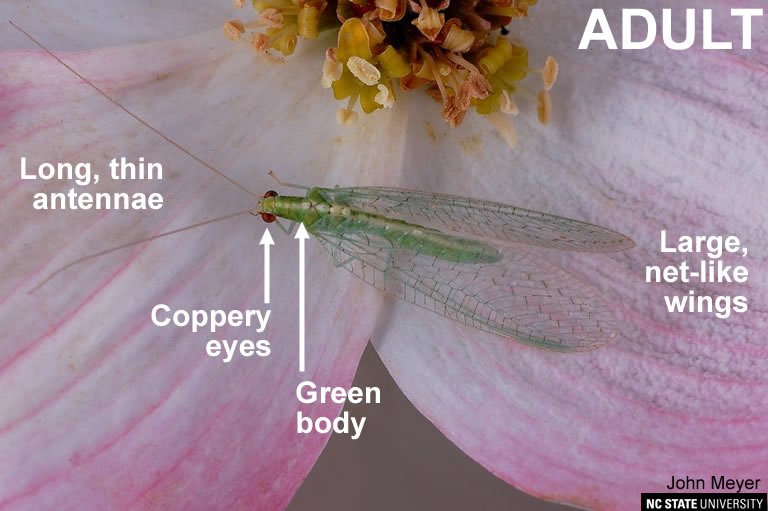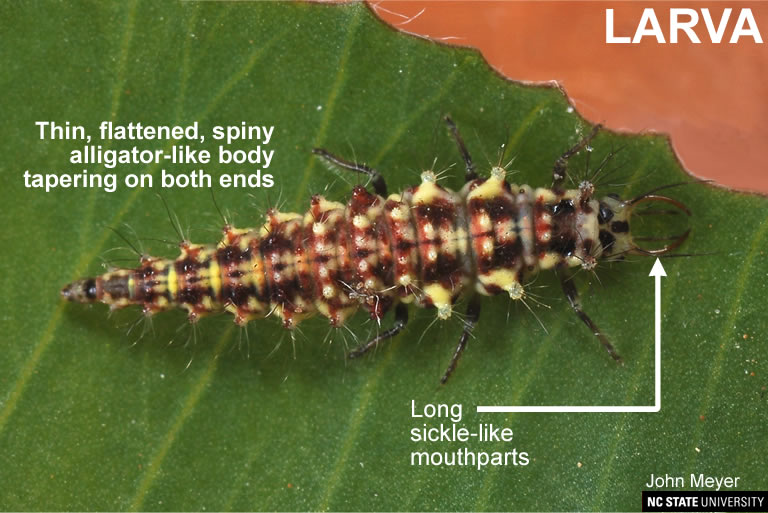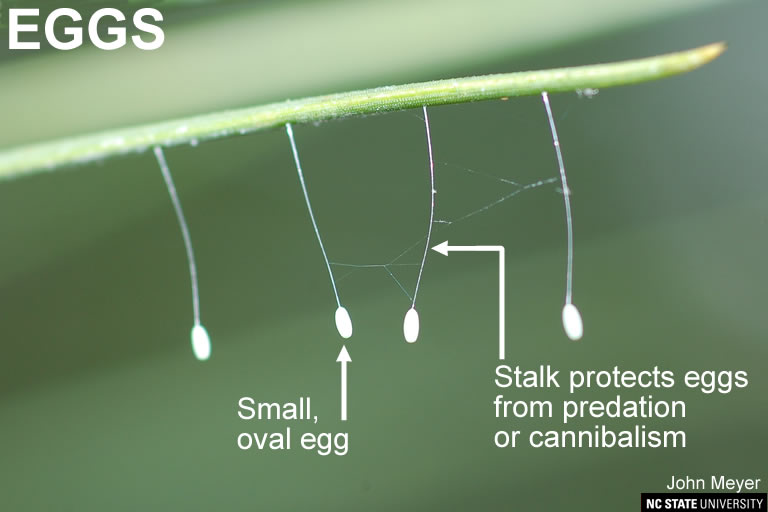Green Lacewing
go.ncsu.edu/readext?563182
en Español / em Português
El inglés es el idioma de control de esta página. En la medida en que haya algún conflicto entre la traducción al inglés y la traducción, el inglés prevalece.
Al hacer clic en el enlace de traducción se activa un servicio de traducción gratuito para convertir la página al español. Al igual que con cualquier traducción por Internet, la conversión no es sensible al contexto y puede que no traduzca el texto en su significado original. NC State Extension no garantiza la exactitud del texto traducido. Por favor, tenga en cuenta que algunas aplicaciones y/o servicios pueden no funcionar como se espera cuando se traducen.
Português
Inglês é o idioma de controle desta página. Na medida que haja algum conflito entre o texto original em Inglês e a tradução, o Inglês prevalece.
Ao clicar no link de tradução, um serviço gratuito de tradução será ativado para converter a página para o Português. Como em qualquer tradução pela internet, a conversão não é sensivel ao contexto e pode não ocorrer a tradução para o significado orginal. O serviço de Extensão da Carolina do Norte (NC State Extension) não garante a exatidão do texto traduzido. Por favor, observe que algumas funções ou serviços podem não funcionar como esperado após a tradução.
English
English is the controlling language of this page. To the extent there is any conflict between the English text and the translation, English controls.
Clicking on the translation link activates a free translation service to convert the page to Spanish. As with any Internet translation, the conversion is not context-sensitive and may not translate the text to its original meaning. NC State Extension does not guarantee the accuracy of the translated text. Please note that some applications and/or services may not function as expected when translated.
Collapse ▲- Common Name: Green Lacewing
- General Category: Predator
- Taxonomic Classification: Neuroptera: Chrysopidae
- Scientific Name: Chrysopa spp.
Description
These intriguing insects are important predators of aphids. The adults are not always predacious, and can often be found on flowers feeding on pollen and nectar. The adults often turn up to porch lights at night year-round in the southeast, although in the winter their color appears somewhat faded. The larvae are always predacious and are sometimes referred to as aphid lions.



Identification
Review the images for tips on how to identify these predators.
Adults
Green-bodied with large transparent net-like wings, long, thin antennae, and coppery-colored eyes.
Larvae
Alligator-like with long, narrow sickle-like jaws.
Eggs
Laid on stalks to avoid predation or cannibalism.
Value in Pest Management
Green lacewings are valuable natural controls that contribute to population regulation of aphids and other small soft-bodied insects. They are widely sold commercially for biological control, and have had equipment specifically developed for their application to various crops and orchards (see BIRC online Directory).
Origin and Distribution
Native, throughout eastern North America.


